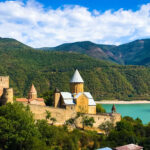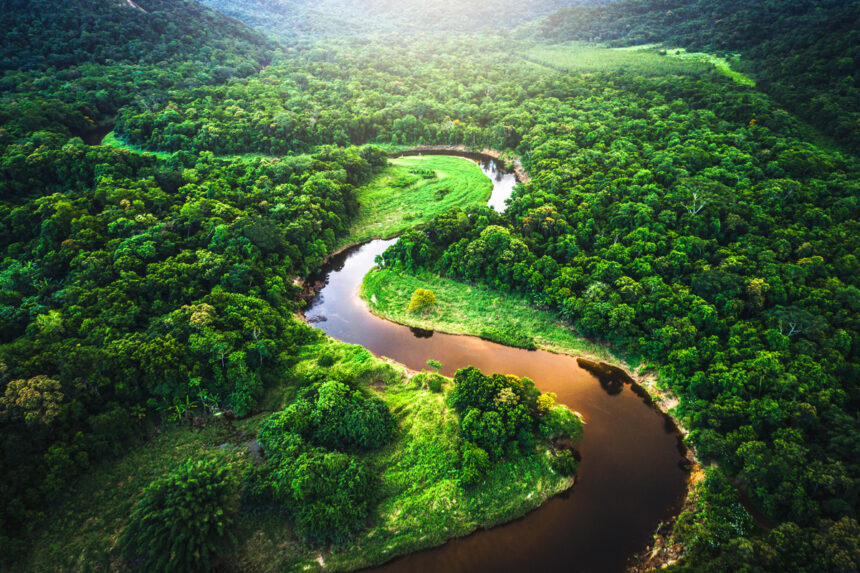The world’s largest river depends on how you measure it. By volume and basin area, the Amazon River in South America is the largest, carrying more water than any other river on Earth. By length, the Nile River in Africa is the longest at about 6,650 km.
Rivers are the lifelines of civilizations. They shape landscapes, provide water for drinking and irrigation, support biodiversity, and inspire myths and legends. Among them, the question often arises: what is the world’s largest river?
The answer depends on how you measure “largest.” Some consider length, while others look at water volume, basin size, or depth. By length, the Nile River in Africa is often regarded as the longest. By discharge volume and basin area, the Amazon River in South America takes the crown.
In this detailed guide, we’ll explore the fascinating facts about the world’s largest rivers, compare the Amazon and Nile, and uncover interesting details about other mighty waterways across the globe.
Amazon vs Nile – Which Is the World’s Largest River?
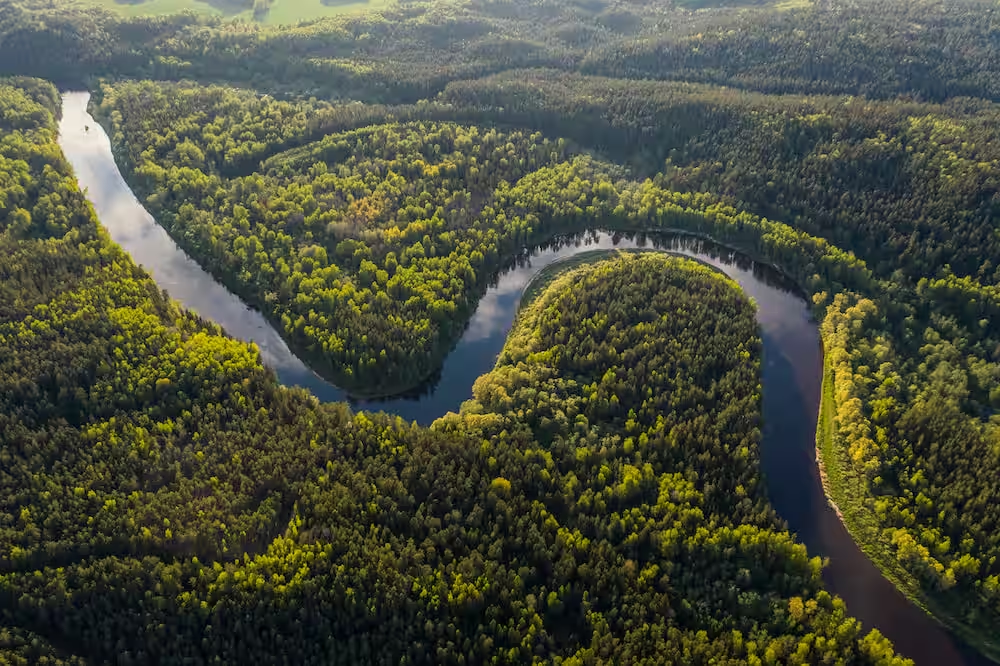
One of the most debated topics in geography is the Amazon vs Nile comparison.
- Amazon River – The Amazon is the largest river in the world by volume. It discharges an average of 209,000 cubic meters of water per second into the Atlantic Ocean. Its drainage basin spans over 7 million square kilometers, making it the world’s largest watershed.
- Nile River – The Nile is considered the longest river in the world by length, stretching approximately 6,650 km (4,130 miles) from Burundi/Rwanda through Egypt into the Mediterranean Sea.
So which is the world’s largest river?
- By volume → Amazon wins.
- By length → Nile wins.
This distinction explains why different textbooks and resources sometimes list different answers.
Key Facts About the Amazon River
The Amazon River is unmatched when it comes to scale and biodiversity.
- Length: Around 6,400 km (3,980 miles)
- Basin area: 7 million sq. km (largest in the world)
- Discharge: Highest in the world (20% of Earth’s freshwater entering oceans)
- Biodiversity: Home to the Amazon rainforest, the most biodiverse ecosystem on Earth
- Countries it flows through: Peru, Colombia, Brazil
The Amazon is not only the largest river in the world by volume but also a vital artery of life for South America, supporting millions of people and countless wildlife species.
Key Facts About the Nile River
The Nile River is often called the “lifeline of Egypt.” For thousands of years, it has been central to civilizations along its banks.
- Length: 6,650 km (4,130 miles) → longest in the world
- Countries it flows through: Burundi, Rwanda, Uganda, South Sudan, Sudan, Egypt
- Basin area: 3.4 million sq. km
- Significance: Source of irrigation and agriculture for ancient and modern societies
While the Nile may not match the Amazon’s volume, its cultural and historical importance is unmatched.
Other Major Rivers in the World
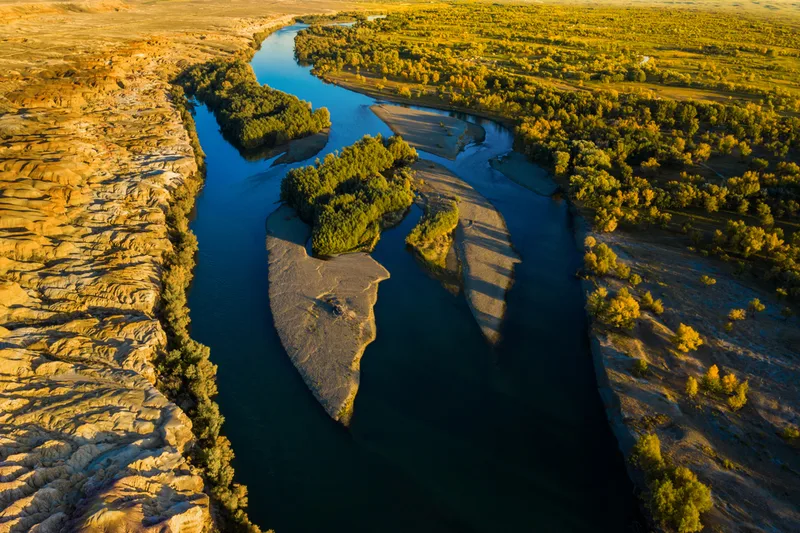
Beyond the Amazon and Nile, several other rivers deserve recognition.
- Yangtze River (China): The longest river in Asia and the 3rd longest in the world, stretching 6,300 km.
- Mississippi-Missouri (USA): A river system extending about 6,275 km, vital for North American trade and agriculture.
- Ganga-Brahmaputra (India & Bangladesh): Sacred in Hinduism, this river system is crucial for millions of people.
👉 For a detailed regional perspective, check out our guide on Asia’s Largest River.
World’s Largest Rivers by Different Criteria
When ranking rivers, different measures give different results:
- By Length: Nile (6,650 km)
- By Volume (discharge): Amazon (209,000 m³/s)
- By Drainage Basin: Amazon (7 million sq. km)
- By Depth: Congo River (~220 m) → deepest river in the world
- By Cultural Impact: Ganga and Nile stand out
This shows why the “largest” river title can’t be attributed to just one metric.
Top 10 Longest Rivers in the World
Here’s a quick reference table for geography learners and travelers:
| Rank | River | Length (km) | Continent |
|---|---|---|---|
| 1 | Nile | 6,650 | Africa |
| 2 | Amazon | 6,400 | South America |
| 3 | Yangtze | 6,300 | Asia |
| 4 | Mississippi-Missouri | 6,275 | North America |
| 5 | Yenisei | 5,539 | Asia |
| 6 | Yellow River (Huang He) | 5,464 | Asia |
| 7 | Ob-Irtysh | 5,410 | Asia |
| 8 | Paraná | 4,880 | South America |
| 9 | Congo | 4,700 | Africa |
| 10 | Amur | 4,444 | Asia |
This ranking helps clarify terms like 2nd longest river in the world (Amazon) and 3rd longest river in the world (Yangtze).
Largest Rivers in India
India is home to several mighty rivers that are central to culture, religion, and economy:
- Ganga (Ganges): Longest river in India (2,525 km), sacred to Hindus
- Brahmaputra: Massive river with huge seasonal floods
- Godavari & Yamuna: Other important rivers for irrigation and life
👉 The largest river in India is the Ganga, by length and cultural significance.
2nd and 3rd Longest Rivers in the World
- 2nd Longest: Amazon (after Nile, when measured by length)
- 3rd Longest: Yangtze River (China)
These rankings are often asked in school exams and competitive tests.
Importance of the World’s Largest Rivers
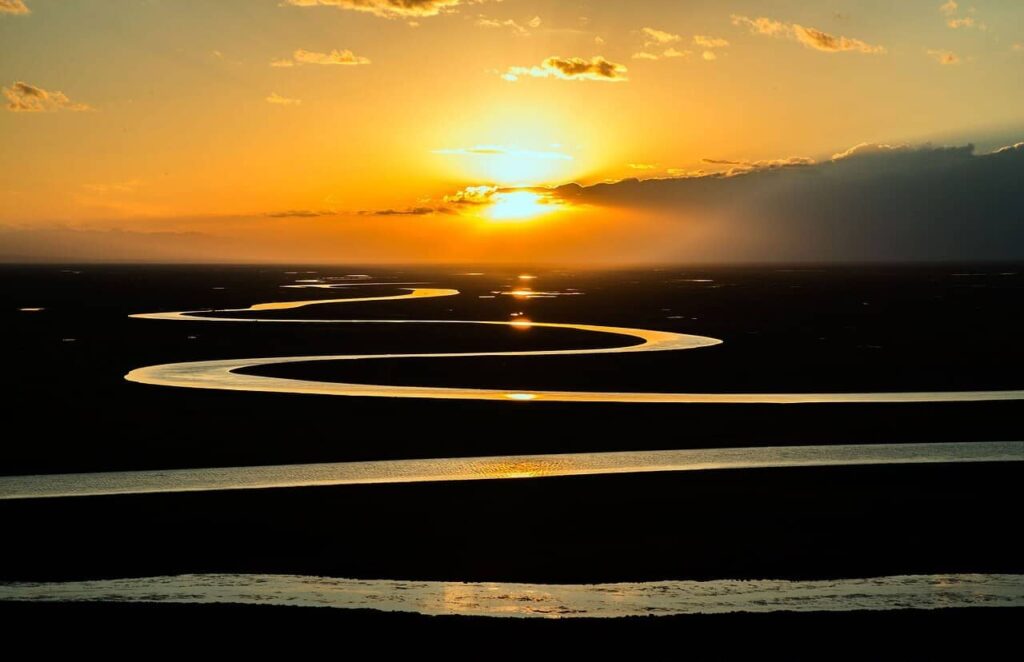
Why do these rivers matter so much?
- Ecology: Support ecosystems and biodiversity
- Culture: Sacred and historical roles (Nile, Ganga)
- Economy: Irrigation, agriculture, trade routes
- Tourism: Cruising the Nile or Amazon attracts global travelers
For affluent travelers, exploring these rivers is more than sightseeing—it’s experiencing the heart of civilizations.
FAQs – People Also Ask
Q1: Which is the world’s largest river?
👉 The Amazon River is the largest by volume, while the Nile is the longest by length.
Q2: Is the Nile or Amazon longer?
👉 The Nile is longer (6,650 km) than the Amazon (6,400 km).
Q3: Is Ganga the largest river in the world?
👉 No, the Ganga is the largest river in India, not the world.
Q4: What is the 2nd longest river in the world?
👉 The Amazon is the 2nd longest river after the Nile.
Q5: What is the 3rd longest river in the world?
👉 The Yangtze River in China.
Q6: What is the world’s largest river by area?
👉 The Amazon basin is the largest in the world (7 million sq. km).
Q7: What is the deepest river in the world?
👉 The Congo River in Africa (~220 m deep).
Conclusion – Why the World’s Largest Rivers Matter
The debate over the world’s largest river teaches us that greatness can be measured in many ways. The Amazon dominates in volume and basin area, while the Nile holds the title of the longest. Meanwhile, rivers like the Yangtze, Ganga, and Mississippi play crucial roles in their regions.
These rivers are more than geographical features—they are lifelines of civilizations, sources of culture, and magnets for travel and exploration.
🌍 Stay connected with Georgia Guider for more global guides on natural wonders, travel destinations, and educational insights.




